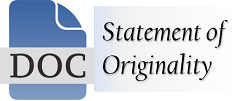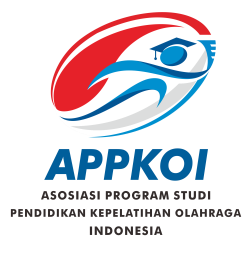The Implementation and Effectiveness of Recovery Methods in a cohort of South African semi-professional Football Players during pre-season Training: A Case Study
DOI:
https://doi.org/10.31599/8e066w08Keywords:
Soccer, pre-season training, fatigue, recovery methodsAbstract
This case study aimed to assess the efficacy of various training methods during the pre-season training of semi-professional football players. The demanding nature of football training places significant strain on players' psychophysiological practices, leading to fatigue. To mitigate fatigue and prevent overtraining, monitoring tools for training loads and recovery interventions are essential. A descriptive cohort case study design, using questionnaires for data collection, applied to 23 football players. The players were observed and evaluated to determine the most preferred recovery methods and monitor psychophysiological fatigue using the well-being questionnaire and Borg's category ratio scale (CR-10) during pre-season training. Recovery interventions tested included active recovery, cold water immersion, and stretching. Analysis revealed that players' well-being consistently fell below baseline levels (p<0.05) according to the well-being questionnaire. Additionally, the CR-10 indicated high perceived training loads among players, with no significant difference observed between the highest and lowest perceived loads (p > 0.05). The effectiveness of the recovery interventions appeared limited, as baseline wellness scores were not achieved. Nonetheless, the high acute training loads experienced during pre-season training may serve as a stimulus for adaptations. Semi-professional players may benefit from tailored combinations of recovery methods following training sessions or games.
Downloads
References
Bahnert, A., Norton, K., & Lock, P. (2013). Association between post-game recovery protocols, physical and perceived recovery, and performance in elite Australian Football League players. Journal of Science and Medicine in Sport, 16, 151-156. https://doi.org/10.1016/j.jsams.2012.05.008
Buckner, S.L.J., Mouser, J.G., Dankel, S.J., Jessee, M.B., Mattocks, K.T., & Loenneke, J.P. (2017). The general adaptation syndrome: Potential misapplications to resistance exercise. Journal of Science and Medicine in Sport, 20, 1015-1017. https://doi.org/10.1016/j.jsams.2017.02.012
Bourdon, P.C., Cardinale, M., Murray, A., Gastin, P., Kellmann, M., Varley, M.C., ... Cable, N.T. (2017). Monitoring athlete training loads: Consensus statement. International Journal of Sports Physiology and Performance, 12(s2), S2-161. https://doi.org/10.1123/IJSPP.2017-0208
Craft, L.L., Magyar, T.M., Becker, B.J., & Feltz, D.L. (2003). The relationship between the competitive state of anxiety inventory 2 and sport performance: A meta-analysis. Journal of Sport and Exercise Psychology, 25, 44-65. https://doi.org/10.1123/jsep.25.1.44
Crowther, F., Sealey, R., Crowe, M., Edwards, A., & Halson, S. (2017). Team sport athletes’ perceptions and use of recovery strategies: A mixed-methods survey study. BMC Sports Science, Medicine and Rehabilitation, 9, 6. https://doi.org/10.1186/s13102-017-0071-3
Custem, J.V., Marcora, S., De Pauw, K., Bailey, S., Meesusen, R., & Roelands, B. (2017). The effects of mental fatigue on physical performance: A systematic review. Sports Medicine, 0, 1-22. https://doi.org/10.1007/s40279-017-0810-3
Dakić, M., Toskić, L., Ilić, V., Đurić, S., Dopsaj, M., & Šimenko, J. (2023). The Effects of Massage Therapy on Sport and Exercise Performance: A Systematic Review. Sports, 11(6). https://doi.org/10.3390/sports11060110
Dal Monte, A., Faina, M., & Mirri, G. (2002). Fatigue and sport. Functional Neurology, 17(1), 7-10.
Hausswirth, C., & Mujika, I. (2013). Recovery for performance in sport. France: Institut National du Sport, de I’Expertise et de la Performance (INSEP).
Hellard, P., Avalos, M., Hausswirth, C., Pyne, D., Toussaint, J.F., & Mujika, I. (2013). Identifying optimal overload and taper in elite swimmers over time. Journal of Sports Science & Medicine, 12(4), 668.
Goodger, K., Gorely, T., Lavallee, D., & Harwood, C. (2007). Burnout in sport: A systematic review. The Sport Psychologist, 21(2), 127-151. https://doi.org/10.1123/tsp.21.2.127
Jougla, A., Micaleff, J.P., & Mottet, D. (2009). Effects of active vs. passive recovery on repeated rugby specific exercise. Journal of Science and Medicine in Sport, 13(3), 1-6. https://doi.org/10.1016/j.jsams.2009.04.004
Kellmann, M., Bertollo, M., Bosquet, L., Brink, M., Coutts, A.J., Duffield, R., ... Kallus, K.W. (2018). Recovery and performance in sport: Consensus statement. International Journal of Sports Physiology and Performance, 13(2), 240-245. https://doi.org/10.1123/ijspp.2017-0759
Kinugasa, T., & Kilding, A.E. (2009). A comparison of post-match recovery strategies in youth soccer players. Journal of Strength and Conditioning Research, 23(5), 1402-1407. https://doi.org/10.1519/JSC.0b013e3181a0226a
Knicker, A.J., Renshaw, I., Oldham, A.R., & Cairns, S.P. (2011). Interactive processes link the multiple symptoms of fatigue in sport competition. Sports Medicine, 41, 307-328. https://doi.org/10.2165/11586070-000000000-00000
Lattier, G., Millet, G.Y., Martin, A., & Martin, V. (2004). Fatigue and recovery after high intensity exercise. Part 2: Recovery interventions. International Journal of Sports Medicine, 25, 509-515. htpps://doi.org/10.1055/s-2004-820946
Losnegard, T., Andersen, M., Spencer, M., & Hallén, J. (2015). Effects of active versus passive recovery in sprint cross-country skiing. International Journal of Sports Physiology and Performance, 10, 630-635. https://doi.org/10.1123/ijspp.2014-0218
Luttrell, M.J., & Halliwill, J.R. (2015). Recovery from exercise: Vulnerable state, window of opportunity, or crystal ball? Frontiers in Physiology, 6, 204. https://doi.org/10.3389/fphys.2015.00204
Marcora, S.M., Staiano, W., & Manning, V. (2009). Mental fatigue impairs physical performance in humans. Journal of Applied Physiology, 106, 857-864. https://doi.org/10.1152/japplphysiol.91324.2008
McLean, B.D., Coutts, A.J., Kelly, V., McGuigan, M.R., & Cormack, S.J. (2010). Neuromuscular, endocrine, and perceptual fatigue responses during different length between-match microcycles in professional rugby league players. International Journal of Sports Physiology and Performance, 5(3), 367-383. https://doi.org/10.1152/japplphysiol.91324.2008
Mubarak, M.F., & Nugroho, S. (2023). Comparison of the Effectiveness of Hydrotherapy and Sport Massage on Fatigue Recovery. International Journal of Physical Education, Sports and Health, 10(2), 140–146. https://doi.org/10.22271/kheljournal.2023.v10.i2c.2845
Mujika, I., Halson, S., Burke, L.M., Balagué, G., & Farrow, D. (2018). An Integrated, Multifactorial Approach to Periodization for Optimal Performance in Individual and Team Sports. International Journal of Sports Physiology and Performance, 13(5), 538–561. https://doi.org/10.1123/ijspp.2018-0093
Nédélec, M., Halson, S., Abaidia, A.E., Ahmaidi, S., & Dupont, G. (2015). Stress, sleep and recovery in elite soccer: A critical review of the literature. Sports Medicine, 45(10), 1387–1400. https://doi.org/10.1007/s40279-015-0358-z
Taylor, K., Chapman, D., Cronin, J., Newton, M.J., & Gill, N. (2012). Fatigue monitoring in high performance sport: A survey of current trends. J Aust Strength Cond, 20(1), 12-23.
Thorpe, R.T., Strudwick, A.J., Buchheit, M., Atkinson, G., Drust, B., & Gregson, W. (2015). Monitoring fatigue during the in-season competitive phase in elite soccer players. International Journal of Sports Physiology and Performance, 10(8), 958-964. https://doi.org/10.1123/ijspp.2015-0004
Tessitore, A., Meeusen, R., Cortis, C., & Capranica, L. (2007). Effects of different recovery interventions on anaerobic performances following pre-season soccer training. The Journal of Strength & Conditioning Research, 21(3), 745-750.
Totterdell, P. (2000). Catching moods and hitting runs: Mood linkage and subjective performance in professional sport teams. Journal of Applied Psychology, 85(6), 848-859. https://doi.org/10.1037/0021-9010.85.6.848
Venter, R.E. (2012). Role of sleep in performance and recovery of athletes: A review article. South African Journal for Research in Sport, Physical Education and Recreation, 34(1), 167-184. https://hdl.handle.net/10520/EJC120506
Published
Issue
Section
License
Copyright (c) 2024 Tevin Blignaut, Cheryl-Ann Volkwyn, Adrian Lombard, Andrew Green

This work is licensed under a Creative Commons Attribution 4.0 International License.






.png)







